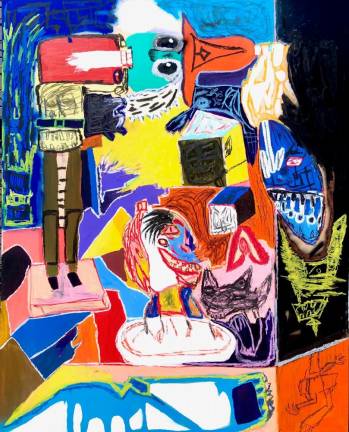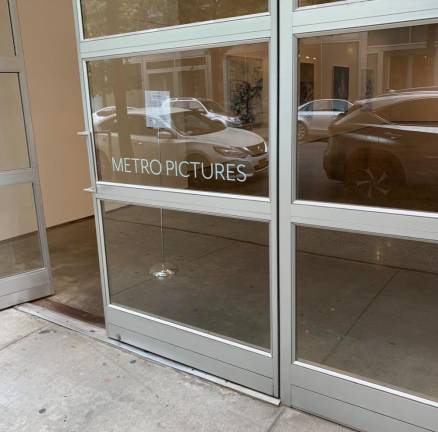As race and inequity are brought to the fore in every aspect of the American social fabric — major league sports, media institutions, politics (the list goes on) — artists in and around Chelsea are examining whose work is represented in the neighborhood’s galleries.
Of the 14 artists featured on Galleriesnow.net under the Chelsea exhibitions tab, two are Black.
Richard Mayhew, an artist known for his brightly-colored landscape paintings has an exhibit at ACA Galleries on West 20th St. Dorian Bergen, the president of ACA, told Chelsea News that the gallery has showcased Black artists since its founding in 1932.
Garry Simmons, whose work addresses both race and class, is on display at Metro Pictures on West 24th St.
The current moment may not be the best time to take a representative snapshot of the data, said Lewis Long, owner of Long Gallery Harlem.
Galleries do not often put out blockbuster exhibitions in the summer. Part of the reason: “The people with money are in the Hamptons, the Vineyard and all these other places,” Long said.
Add COVID-19 to the mix, and any semblance of normalcy is gone.
But, “in the last ten years, more mainstream galleries, more traditional storied galleries are portraying Black artists,” Long said. “And they realize the value of them.”
He pointed to two worth mentioning Chelsea art institutions that have focused on Black artists’ work: David Zwirner Gallery on West 19th and 20th St. and Jack Shainman Gallery on West 20th St.
Making Meaningful Change
As is common in other major cultural and professional spheres, the art world is made up of an amalgam of decision-makers — ones who, according to Marc Handelman, a professor of painting at Rutgers, are often white and bound by racial hierarchies.
“The New York art world is an institution, which like so many other institutions ... is white,” Handelman wrote in an email. “This means that the overwhelming majority of curators, museum owners, boards of trustees, directors, and administrative staff, critics, art historians, gallery owners and directors, and non-profit organizations are owned, or run by white people as is the collector and investor class.”
In order for the New York art community in general and Chelsea galleries in particular to make meaningful change, critics such as Handelman argue that simple window dressing (i.e., periodically featuring Black artists) is not enough.
“Merely representational changes within Chelsea and New York as well as the greater art world have a structural limit,” Handelman wrote.
This moment in time, according to Handelman, is one in which limits stand not as unmovable boundaries, but rather as lines demanding to be crossed.
“[Our national] reckoning with institutional racism and white supremacy poses a deeper question about equality and the very fabric of the art world itself, not just its composition.”
He suggests a systemic re-imagining, one that starts from the ground up; a re-imagining not just of cultural values but the “de-acculturation of [fixed] economies: from art-school and student debt, to real-estate and the broader access to art...”
“Fuel to Fire”
J.J. Pinckney, a Brooklyn-based artist and CEO of Found Wonder is enmeshed in the New York art scene; his statements underscored the inequity that he sees in the city’s creative community.
“Since I could remember, Black artists in major programs have never been represented justly,” Pinckney wrote in a direct message to Chelsea News.
For him, “that’s just fuel to fire,” a catalyst for a competitive edge.
Pinckney’s expressed urgency comes across in his work. The Basquiat-esque strokes convey a sense of creative and professional vertigo. Viewing his work, it is clear, something, everything, is on the line.
“The art we are creating makes people really FEEL,” Pinckney wrote. “We’re not interested in pretty pictures.”
Take one glance at the world right now, and a pretty picture is far from top of mind. Yet, that glance is making people feel, and turning feelings into action.
It took eight minutes of police-sanctioned violence captured on a cell phone camera and a deadly virus that disproportionately kills people of color for a critical mass of people to reexamine the racial imbalance of the art world.
“Some of the most urgent and visionary work in this reimagining is by Black artists and writers,” Handelman wrote. “Despite the turmoil the pandemic has caused to the art world, there’s never been a better moment to imagine something better.”
“The art we are creating makes people really FEEL. We’re not interested in pretty pictures.” Artist J.J. Pinckney

